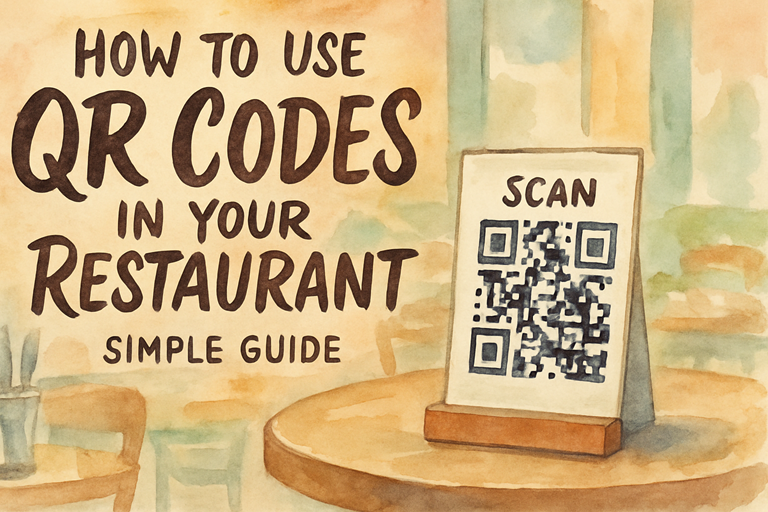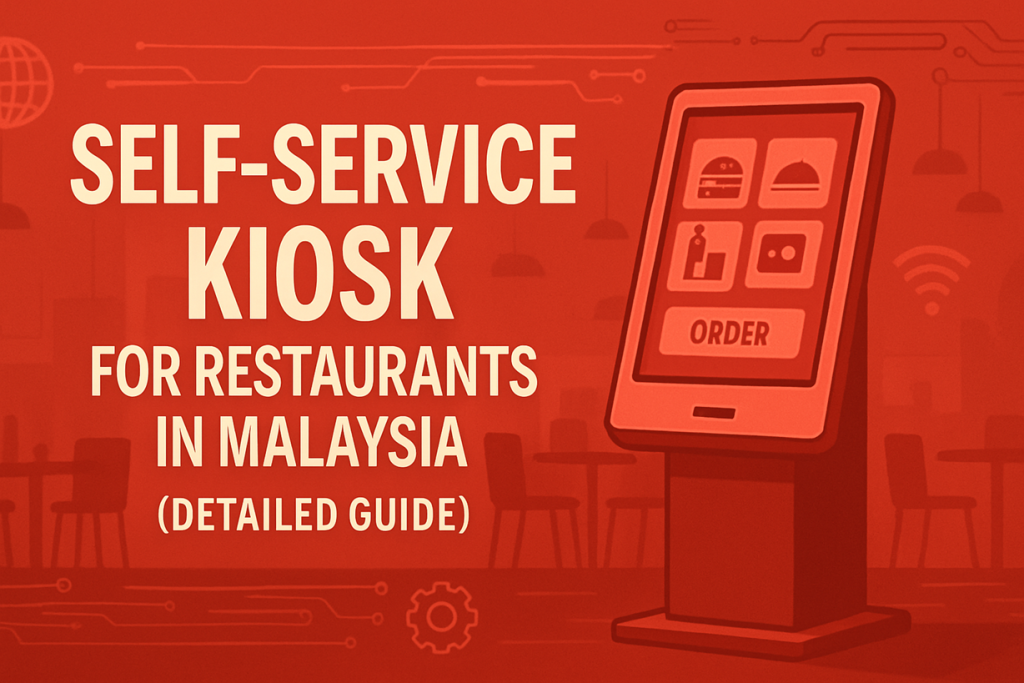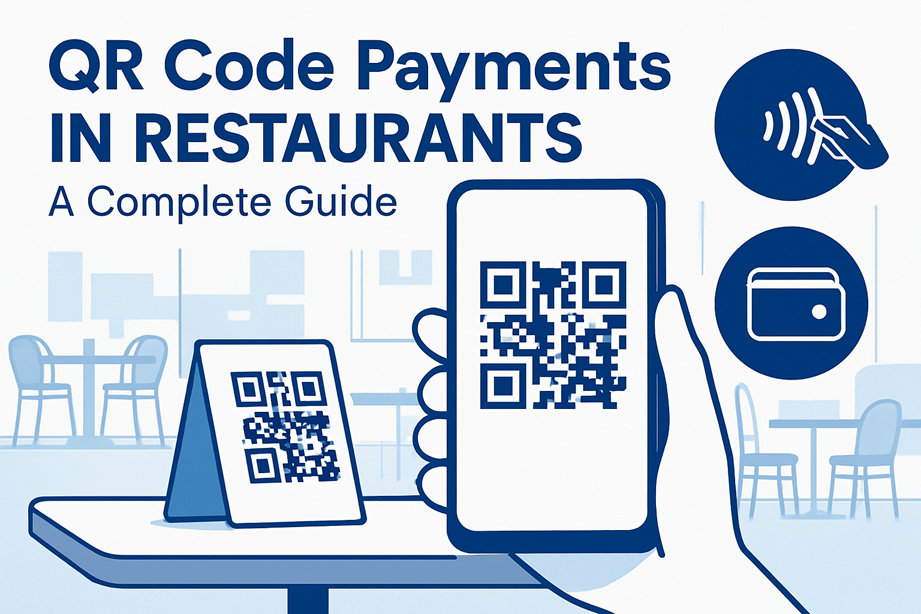When it comes to the user experience of QR ordering, the main goal is to make the process as seamless and easy as possible. This includes providing customers with a clear and concise ordering process, as well as providing a user-friendly interface that is intuitive and easy to navigate. A good user experience should also include a secure payment process, as well as a way to track orders and receive notifications when orders are ready to be picked-up. Ultimately, the goal is to provide a hassle-free and enjoyable experience that customers will come back to time and time again.
In this blog post, we will take a look at the importance of user experience in QR ordering for restaurants, and how restaurants can ensure that their customers have a positive and enjoyable experience. We will discuss the benefits of QR ordering and how restaurants can use technology to improve their user experience and drive customer loyalty.
Benefits of User Experience in QR Ordering for Restaurants
#1: Increased Efficiency
For restaurants, the introduction of QR ordering can expedite the customer ordering process, allowing customers to place their orders quickly and efficiently. This in turn can free up more time for restaurant staff, who can then focus on preparing and delivering orders faster. Furthermore, the streamlined process of QR ordering can also help to reduce wait times for customers, allowing them to spend less time waiting for their orders to arrive. In addition, QR ordering can also lead to increased accuracy of orders. Customers are able to easily view their orders on the display screen and make sure that the restaurant has received their correct order. This can help to reduce confusion and mistakes in orders, leading to happier customers. All in all, the incorporation of user experience into QR ordering can result in increased efficiency for both restaurants and their customers.
#2: Improved Customer Satisfaction
With QR ordering, customers have the ability to place orders without waiting in line or having to interact with staff. This allows customers to be more efficient when ordering their meals and reduces the time they have to wait to get their food. Additionally, customers can customise their orders with ease and are able to quickly modify their orders as needed. This helps customers feel more in control of their orders and can help them get exactly what they want.
Another benefit of QR ordering for restaurants is that it allows customers to quickly provide feedback on their meals. This can help restaurants improve their menus and ensure that customers are getting the best food possible. Additionally, customers can easily leave reviews on the restaurant’s website or social media, which helps other customers make informed decisions about where to eat. By providing customers with a convenient way to provide feedback, restaurants are able to make changes to their menus and create a better customer experience.
#3: Increased Revenue
When it comes to QR ordering for restaurants, one of the main benefits is increased revenue. By implementing a QR code ordering system in restaurants, owners are able to streamline their ordering process and provide customers with an improved user experience. This improved user experience leads to an increase in sales, as customers are more likely to return to a restaurant that is easy to order from. Not only does QR ordering increase revenue by bringing in new customers, but it also helps increase the average order size. When ordering through a QR code, customers can easily add items to their order that they may not have thought of otherwise. This allows restaurants to increase their profits without having to invest in additional marketing campaigns. Furthermore, QR ordering also helps reduce order errors and confusion, which can help restaurants save on costs associated with incorrect orders.
Challenges of User Experience in QR Ordering for Restaurants
#1: Technical Difficulties
When introducing QR ordering technology to a restaurant, it is important to consider the potential technical difficulties that may arise. QR ordering technology is complex and requires a good internet connection and a reliable server to ensure the system runs smoothly. If the connection is too slow or the server is unreliable, the user experience can be greatly diminished. This can lead to customer frustration, fewer orders, and a decrease in customer satisfaction.
To prevent technical difficulties, restaurants should invest in a quality internet connection and server. This will provide customers with a faster and more reliable experience, resulting in a more enjoyable ordering process. Additionally, restaurants should make sure that their staff is trained in how to troubleshoot any technical issues that might arise. Having someone on hand who knows how to quickly address any potential problems can go a long way in improving the user experience.
#2: Security Concerns
When it comes to QR ordering for restaurants, security is a major concern. Customers need to know that their data is safe and secure when they are placing orders. Restaurants need to ensure that their systems are secure and that their customers’ data is protected from any potential malicious actors. It is important to understand how a QR ordering system works in order to ensure that it is secure. The basic premise behind QR ordering is that customers can scan a QR code that is generated for their order. The code contains the details of the order, such as the type of food, the quantity, and any other requests. Once the code is scanned, the order is placed and processed. However, it is important to ensure that the code is encrypted so that only the customer can access their order information. Additionally, the restaurant should also have a secure payment system in place so that customers can feel comfortable making payments online.
#3: Lack of User Adoption
Having a QR ordering system for restaurants is ultimately a great way to increase customer convenience and convenience. However, if user adoption of the system is low, it can be a waste of time and resources. For example, if the restaurant customers are not comfortable using the system, then it won’t be as successful as it could be. In order for QR ordering to be successful, restaurants must make sure that their customers understand how to use the system.
One way to encourage user adoption is to provide clear instructions. Consider including step-by-step instructions on how to use the QR ordering system in the restaurant’s menu or website. Additionally, providing customers with a tutorial video or FAQ page can be a great way to make sure they understand how the system works. This will help customers feel more comfortable using the system, and encourage them to use it more frequently. Finally, restaurants should also consider offering incentives to customers who use the QR ordering system. Offering discounts or rewards for customers who use the system can be a great way to encourage user adoption. When customers understand the advantages of using the QR ordering system, they’ll be more likely to use it and benefit from its convenience. By taking these steps, restaurants can ensure that their QR ordering system is successful and that users are comfortable using it.
Strategies for Improving User Experience in QR Ordering for Restaurants
#1: Design for Usability
Usability is all about making the experience easy and intuitive for customers. It should be easy for them to find the items they are looking for and have them added to their order with minimal effort. The design should also be visually appealing, making it easy for customers to find what they need without having to search through a cluttered interface. The menus should be organised and aesthetically pleasing, allowing customers to quickly scan and make their selections.
The checkout process should also be intuitive and simple, so customers can easily review their orders and submit them with minimal effort. Creating a user-friendly experience is key when it comes to QR ordering for restaurants. By taking the time to design an easy-to-use interface, customers can quickly and easily place their orders without feeling overwhelmed or frustrated. This will not only create a positive user experience, but it can also lead to increased customer loyalty and satisfaction.
#2: Provide Clear Instructions
Not only do customers need to be able to understand how to use the technology, but they should also easily understand the ordering process. If a customer is unclear about how to use the technology or how to place an order, they may become frustrated and may not complete their order. To ensure a positive user experience, restaurants should provide clear and concise instructions for their customers. This could include step-by-step instructions for how to scan the QR code and navigate the ordering process.
Additionally, restaurants should provide visuals that illustrate the ordering process, such as icons or illustrations to show customers where to click or tap to complete their order. By providing clear and easy to understand instructions, restaurants can make sure that their customers have a positive experience with their QR ordering system. Finally, it’s important for restaurants to make sure that their instructions are up-to-date and accurate. Restaurants should periodically review their instructions to make sure that the correct information is being presented to their customers. This can help ensure that customers have a positive user experience with the restaurant’s QR ordering system.
#3: Offer Support
In order to ensure that QR ordering is successful for restaurants, it is important that they offer support to customers who are using the system. This could include providing step-by-step instructions on how to use the QR code scanner, answering questions customers may have, and offering assistance with any technical issues that may arise. Providing customer support can help ensure that customers have a positive experience with QR ordering and will continue to use it. The type of customer support that restaurants offer should be tailored to the needs of their customers. For example, if the majority of their customers are tech-savvy and comfortable using new technology, restaurants may be able to provide more basic support such as instructions and troubleshooting. However, if the majority of their customers are unfamiliar with technology, restaurants will need to provide more in-depth support and guidance. Additionally, restaurants should ensure that their customer support team is available during their operating hours and is responsive to customer inquiries.
Conclusion
It is clear that user experience plays a major role in QR ordering for restaurants. By making the ordering process more user friendly, restaurants can increase customer satisfaction and improve their overall customer experience. Restaurants should also consider investing in tools that will make navigating their QR ordering system easier and more intuitive for customers. Furthermore, incorporating features like personalized recommendations, customer feedback, and order tracking can help to further enhance the customer experience. Ultimately, providing a positive user experience for customers through QR ordering is essential for restaurants to maintain customer loyalty and encourage repeat visits.



